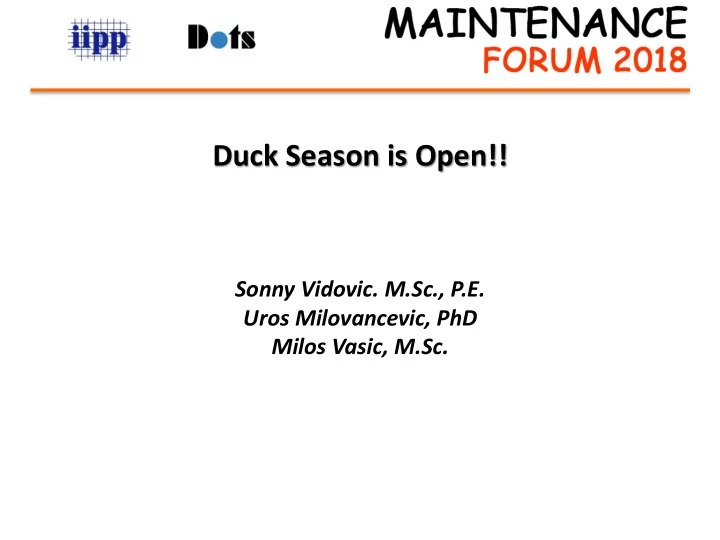

Duck Season is Open!! Sonny Vidovic. M.Sc., P.E. Uros Milovancevic, PhD Milos Vasic, M.Sc.
For many decades, ENERGY DEMAND followed an easily predictable pattern, with very little change in levels of demand on the grid.
In February, 2009, President Obama called for doubling renewable energy within the following three years.. Renewable energy reached a major milestone in the first quarter of 2011, when it contributed 11.7 % of total national energy production
Suddenly, a new image appeared on the ENERGY DEMAND charts . THE DUCK CURVE!
The Problem Lies in the Belly!!! Low demand forces grid operators to turn off peaker power plants and ramp down baseline power plants Then, a few hours later, they all have to ramp up again with little to no warning
During sudden and steep changes in demand, Grid operators and regulators struggle to maintain stability and efficiency by turning power plants on and off resulting in: instability in the power supply large expense to taxpayers increased pollution to the environment.
Power Supply > Demand = Overgeneration Peak Load Demand While not meeting peak load is a problem, equally concerning is overgeneration. Without intervention, generators and certain motors connected to the grid will increase rotational speed, which can cause significant damage to equipment.
Balancing supply with demand, by increasing and reducing output is becoming an impossible task. Global Industries must focus on the development of new fast-reacting resources or energy storages.
Some ideas that are already engaged are: Installing more dispatchable generation, like interconnections between states Energy Storage Energy Demand Management
Energy Storage : Pumped-storage hydroelectricity. Battery storage power stations. Solar thermal energy with Thermal energy storage Ice storage air conditioning. Use of batteries in electric vehicles for temporary storage.
Energy Demand Management Transitioning to more efficient lighting systems, LED lighting. Time of-use-pricing Smart grid technology Air conditioning is ~½ of US peak demand, so changing this from “as - used load” to a scheduled/controlled load is a huge opportunity. It basically amounts to finding lots of little ways that customers can shift their demand, aggregating all those customers together, and treating the sum of their demand-shifting capacity as dispatchable power.
Let’s work TOGETHER to flatten the DUCK!
Recommend
More recommend